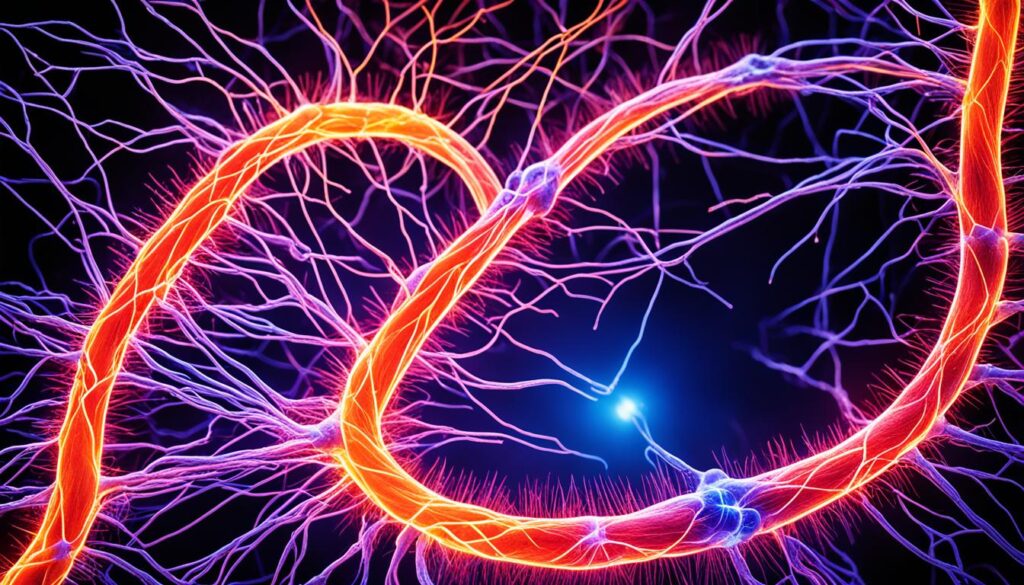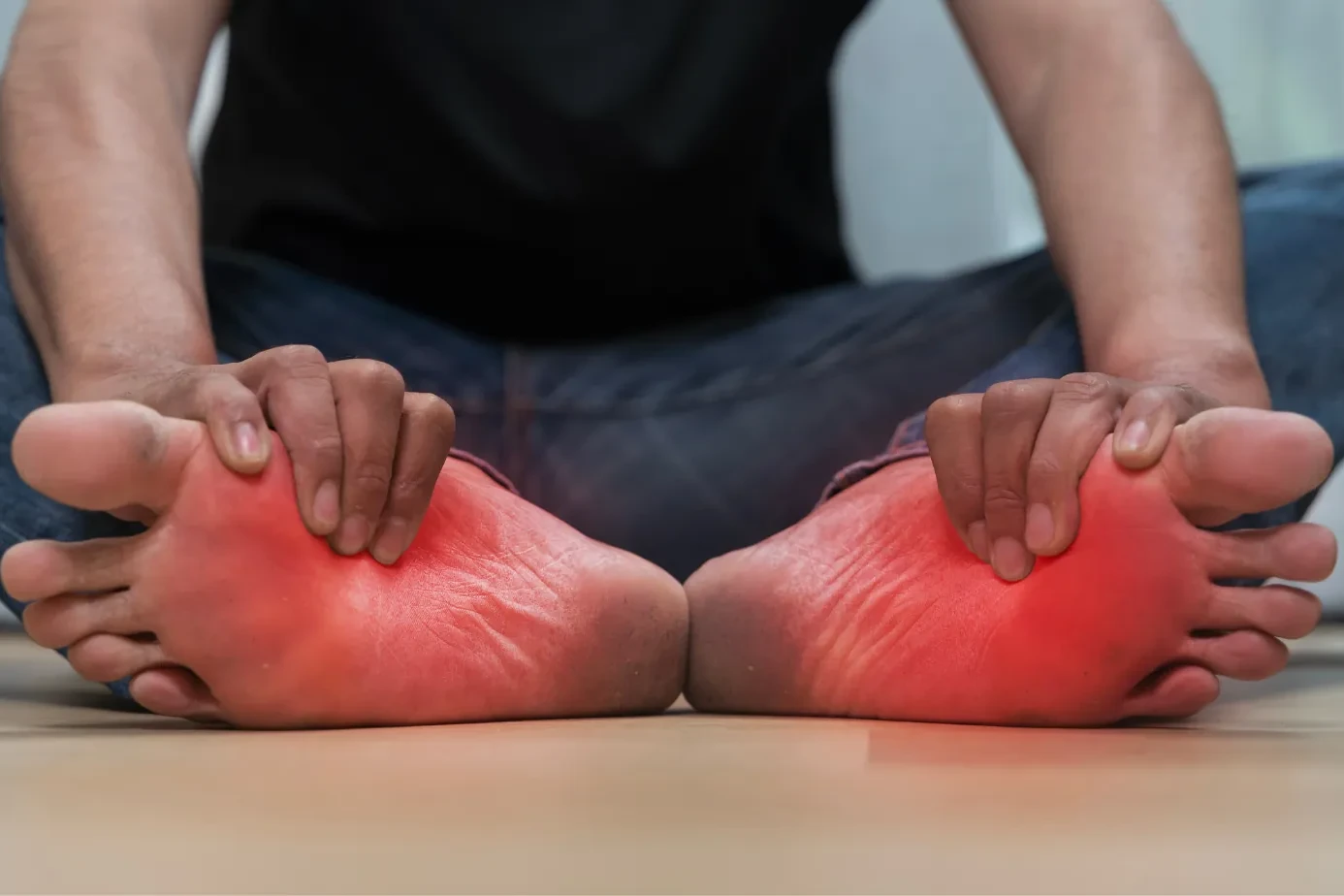Lets provide you with information on an effective treatment option for chronic regional pain syndrome (CRPS) – sympathetic nerve blocks. If you or someone you know is suffering from CRPS, you know how debilitating it can be, affecting your daily life and overall quality of life. But there is hope.
Sympathetic nerve blocks have shown promising results in providing pain relief and improving the symptoms of CRPS. In fact, a case series of three patients with CRPS demonstrated almost complete resolution of pain, symptoms, and signs within just six months of receiving sympathetic blocks. These patients were able to wean off pain medications and even return to full-time employment.
With such positive outcomes, it’s clear that sympathetic nerve blocks can make a significant difference in the lives of patients with CRPS. Whether you’re seeking relief from chronic pain or looking to improve your overall quality of life, consider exploring the benefits of sympathetic nerve blocks for CRPS alternative treatment.
Table of Contents
ToggleUnderstanding Complex Regional Pain Syndrome (CRPS)
Complex regional pain syndrome (CRPS) is a chronic pain condition that can have a significant impact on a person’s daily life. It is characterized by spontaneous and regional pain that is disproportionate to the typical course of pain after similar tissue trauma. In addition to pain, CRPS is often accompanied by symptoms such as swelling, changes in skin color and temperature, and hypersensitivity.
The diagnosis of CRPS is based on clinical criteria, with the Budapest criteria being commonly used to improve the specificity of the diagnosis. This condition can be challenging to manage and may require a multimodal approach to treatment.
Key Symptoms of CRPS:
- Spontaneous and regional pain
- Disproportionate pain compared to tissue trauma
- Swelling
- Changes in skin color and temperature
- Hypersensitivity
CRPS can greatly impact a person’s quality of life and daily activities. It is essential to seek medical attention and proper management for this chronic pain condition. In the next section, we will explore the role of the sympathetic nervous system in pain and its connection to CRPS.
The Role of the Sympathetic Nervous System in Pain
In order to understand how sympathetic nerve blocks provide pain relief, it is important to comprehend the role of the sympathetic nervous system (SNS) in pain transmission. The SNS is a component of the autonomic nervous system, which controls involuntary bodily functions such as blood flow, digestion, and sweating.
The SNS has been implicated in the transmission of various types of pain, including neuropathic, vascular, and visceral pain. Sympathetic ganglia, which are targeted in sympathetic nerve blocks, play a significant role in the transmission of pain signals.
The sympathetic ganglia act as relay stations for pain signals, allowing them to travel from the source of pain to the brain. These ganglia contain bundles of nerve fibers that connect different parts of the body to the central nervous system.
By blocking these ganglia through sympathetic nerve blocks, the function of the sympathetic nervous system can be temporarily interrupted. This interruption disrupts the transmission of pain signals, resulting in pain relief for the patient.

It is important to note that sympathetic nerve blocks do not completely eliminate pain sensations. Instead, they provide temporary relief by interrupting the pain transmission process. This offers a window of opportunity for patients to engage in other forms of pain management, such as physical therapy, without being overwhelmed by pain.
Overall, understanding the role of the sympathetic nervous system in pain transmission is key to comprehending the effectiveness of sympathetic nerve blocks as a treatment option for pain relief in conditions such as complex regional pain syndrome (CRPS).
| Key Points | Explanation |
|---|---|
| The sympathetic nervous system controls involuntary bodily functions. | It regulates blood flow, digestion, and sweating. |
| Sympathetic ganglia play a role in pain transmission. | They act as relay stations for pain signals. |
| Sympathetic nerve blocks interrupt the function of the sympathetic nervous system. | This provides temporary relief by blocking pain signal transmission. |
Sympathetic Nerve Block for CRPS: Procedure and Benefits
A sympathetic nerve block can be a valuable diagnostic and therapeutic tool in the management of Complex Regional Pain Syndrome (CRPS). This procedure involves injecting an anesthetic solution directly into the targeted sympathetic ganglia or plexus, depending on the location of the pain. By blocking the transmission of pain signals, sympathetic nerve blocks can provide significant pain relief and improve a patient’s ability to tolerate physical therapy, enhancing overall pain management.
For upper body pain, a sympathetic nerve block can be performed in the neck using a technique called a stellate ganglion block. Conversely, for lower body pain, a lumbar sympathetic block is utilized, targeting the lower spine. By tailoring the block to the specific pain region, physicians can maximize the effectiveness of the treatment.
One of the key benefits of sympathetic nerve blocks is their ability to offer both diagnostic and therapeutic insight. By observing the patient’s response to the procedure, physicians can confirm the involvement of the sympathetic nervous system in the patient’s pain and gain essential diagnostic information. Furthermore, if the block proves successful in providing pain relief, it can serve as a therapeutic intervention, allowing patients to engage in physical therapy and regain functionality.
Studies have shown that patients who have not responded well to other pain management interventions may find sympathetic nerve blocks particularly beneficial. These blocks can help alleviate pain and re-establish a sense of normalcy in daily activities, as demonstrated by the case series mentioned earlier.
To better illustrate the benefits of sympathetic nerve blocks for CRPS, I have compiled the following comparison table:
| Procedure | Diagnostic Benefits | Therapeutic Benefits |
|---|---|---|
| Stellate Ganglion Block (Neck) | Confirms involvement of sympathetic nervous system Provides diagnostic information | Significant pain relief Improves ability to tolerate physical therapy Enhances overall pain management |
| Lumbar Sympathetic Block (Lower Spine) | Confirms involvement of sympathetic nervous system Provides diagnostic information | Significant pain relief Improves ability to tolerate physical therapy Enhances overall pain management |

As you can see in the table above, both stellate ganglion blocks and lumbar sympathetic blocks offer insightful diagnostic benefits, confirming the involvement of the sympathetic nervous system in CRPS. On the therapeutic front, these blocks provide significant pain relief and help patients regain functionality and improve their quality of life.
In the next section, we will discuss the procedure of a sympathetic nerve block in more detail and explore the possible side effects that patients may experience.
Sympathetic Nerve Block: Procedure and Possible Side Effects
During a sympathetic nerve block procedure, a pain management specialist will identify the location of the targeted ganglia using fluoroscopy or X-rays. The area will be numbed with a local anesthetic before the injection of anesthetic solution. The procedure is relatively safe, and patients can usually go home afterward and resume normal activities after a day of rest.
Possible side effects include temporary soreness at the injection site, a feeling of warmth, or some weakness. If a stellate ganglion block is performed, temporary voice changes, eyelid droop, or difficulty swallowing may occur. These side effects are typically temporary and resolve on their own.
To give you a better understanding, let’s take a closer look at the procedure steps:
- The patient will be positioned and prepared for the procedure. The specialist will clean the area of injection with an antiseptic solution to reduce the risk of infection.
- Using fluoroscopy or X-rays, the specialist will locate and identify the targeted ganglia or plexus responsible for transmitting the pain signals. This ensures precise placement of the needle during the injection.
- The specialist will administer a local anesthetic to numb the area, reducing any discomfort during the procedure.
- Once the area is numb, the specialist will carefully inject the anesthetic solution directly into the targeted ganglia or plexus. This blocks the sympathetic nerve signals, providing pain relief.
- The procedure is usually completed within a few minutes, and the patient will be observed for a short period before being discharged.
It’s important to note that every individual may respond differently to the procedure, and the side effects mentioned above are temporary and self-resolving. If you experience any persistent or concerning side effects, it is important to contact your healthcare provider for further guidance.
Efficacy of Sympathetic Blocks for CRPS Treatment
The efficacy of sympathetic blocks in the treatment of Complex Regional Pain Syndrome (CRPS) is still under investigation, and there is limited high-quality evidence available. However, a case series presented in this article showcases the potential effectiveness of sympathetic blocks in a subset of patients with CRPS.
In the case series, patients with CRPS experienced significant pain relief and improvement in symptoms and signs within six months of receiving sympathetic blocks. The relief from pain was so substantial that the patients were able to gradually decrease their reliance on pain medications and return to their normal everyday activities, including full-time employment.
Sympathetic blocks should be considered as an early treatment option for CRPS, before proceeding to physical therapy or more invasive pain management interventions. This approach aims to provide a solid foundation of pain relief and restore functionality, allowing patients to actively participate in subsequent rehabilitation programs more effectively.
| Treatment | Pain Relief | Improvement in Symptoms | Return to Normal Activities |
|---|---|---|---|
| Sympathetic Blocks | ✓ (Significant) | ✓ (Substantial) | ✓ (Including full-time employment) |
| Physical Therapy | Varies | Varies | Varies |
| Invasive Interventions | Varies | Varies | Varies |
As demonstrated in the table, sympathetic blocks have shown significant pain relief, improvement in symptoms, and successful return to normal activities, including full-time employment compares to other treatments such as physical therapy and invasive interventions. While further research is needed to establish the efficacy of sympathetic blocks, the results from the case series provide valuable insights into their potential as an effective treatment option for CRPS.

The Role of Sympathetic Blocks in Pain Management
Sympathetic blocks offer a potential treatment option for patients with Chronic Regional Pain Syndrome (CRPS) who have not responded to other interventions. While research on the efficacy of sympathetic blocks is limited, their use in clinical practice suggests that they can provide significant pain relief in some cases. These blocks may be particularly beneficial for patients who are unable to tolerate physical therapy due to severe pain.
By providing pain relief, sympathetic blocks can help patients engage in physical therapy and other rehabilitative treatments, leading to improved overall pain management. Sympathetic blocks have shown promising results in terms of pain reduction and symptom improvement for patients with CRPS. Although more research is needed to fully understand their effectiveness, their use as a treatment option should not be ignored.
Despite the limited research, sympathetic blocks have emerged as a viable alternative for patients with CRPS who have exhausted other treatment options. The ability of sympathetic blocks to provide pain relief opens the door to more active participation in physical therapy, which is crucial for improving function and quality of life for patients with CRPS. While individual results may vary, sympathetic blocks offer hope for improved pain management and better outcomes for patients living with CRPS.
FAQ
What is a sympathetic nerve block?
A sympathetic nerve block is a procedure in which an anesthetic solution is injected into the targeted sympathetic ganglia or plexus to temporarily interrupt the function of the sympathetic nervous system and provide pain relief.
How can a sympathetic nerve block help with CRPS?
Sympathetic nerve blocks have shown promising results in providing pain relief and improving the symptoms of CRPS. They can be used both for diagnostic and therapeutic purposes and may benefit patients who have not responded well to other pain management interventions.
What are the possible side effects of a sympathetic nerve block?
Possible side effects of a sympathetic nerve block include temporary soreness at the injection site, a feeling of warmth, some weakness, temporary voice changes, eyelid droop, or difficulty swallowing. These side effects are typically temporary and resolve on their own.
How long does it take for a sympathetic nerve block to provide pain relief?
The duration of pain relief varies from person to person. In some cases, patients experience almost complete resolution of pain, symptoms, and signs within six months of receiving sympathetic nerve blocks. However, the efficacy of sympathetic blocks is still being researched, and results may vary.
Are sympathetic nerve blocks a long-term solution for CRPS?
While sympathetic nerve blocks can provide significant pain relief for some patients with CRPS, they may not be a long-term solution. CRPS treatment often requires a multimodal approach, including physical therapy and other pain management interventions.
Are sympathetic nerve blocks safe?
Sympathetic nerve blocks are relatively safe procedures. The area is numbed with a local anesthetic before the injection, and patients can usually go home afterward and resume normal activities after a day of rest. However, like any medical procedure, there are potential risks and complications that your healthcare provider will discuss with you.
Can sympathetic nerve blocks help me return to work?
In some cases, sympathetic blocks have allowed patients with CRPS to wean off pain medications and return to full-time employment. However, the effectiveness of sympathetic blocks varies from person to person, and it’s important to discuss your individual case with your healthcare provider.
What should I expect during a sympathetic nerve block procedure?
During a sympathetic nerve block procedure, a pain management specialist will use fluoroscopy or X-rays to identify the location of the targeted ganglia. The area will be numbed with a local anesthetic before the injection of anesthetic solution. The procedure itself is relatively quick, and you will be able to go home afterward.
Are sympathetic nerve blocks covered by insurance?
Coverage for sympathetic nerve blocks may vary depending on your insurance provider and policy. It’s best to contact your insurance company to verify coverage and discuss any requirements or pre-authorization needed.
Can sympathetic nerve blocks be used for other conditions besides CRPS?
Yes, sympathetic nerve blocks can be used to treat other conditions that involve pain transmission through the sympathetic nervous system, such as neuropathic, vascular, and visceral pain. Your healthcare provider can assess whether a sympathetic nerve block may be a suitable treatment option for your specific condition.
Source Links
About The Author

This article is medically reviewed by Dr. Chandril Chugh, Board-Certified Neurologist, providing expert insights and reliable health information.
Dr. Chandril Chugh is a U.S.-trained neurologist with over a decade of experience. Known for his compassionate care, he specializes in treating neurological conditions such as migraines, epilepsy, and Parkinson’s disease. Dr. Chugh is highly regarded for his patient-centered approach and dedication to providing personalized care.
→ Book a consultation to discover which remedies suit your needs best.




